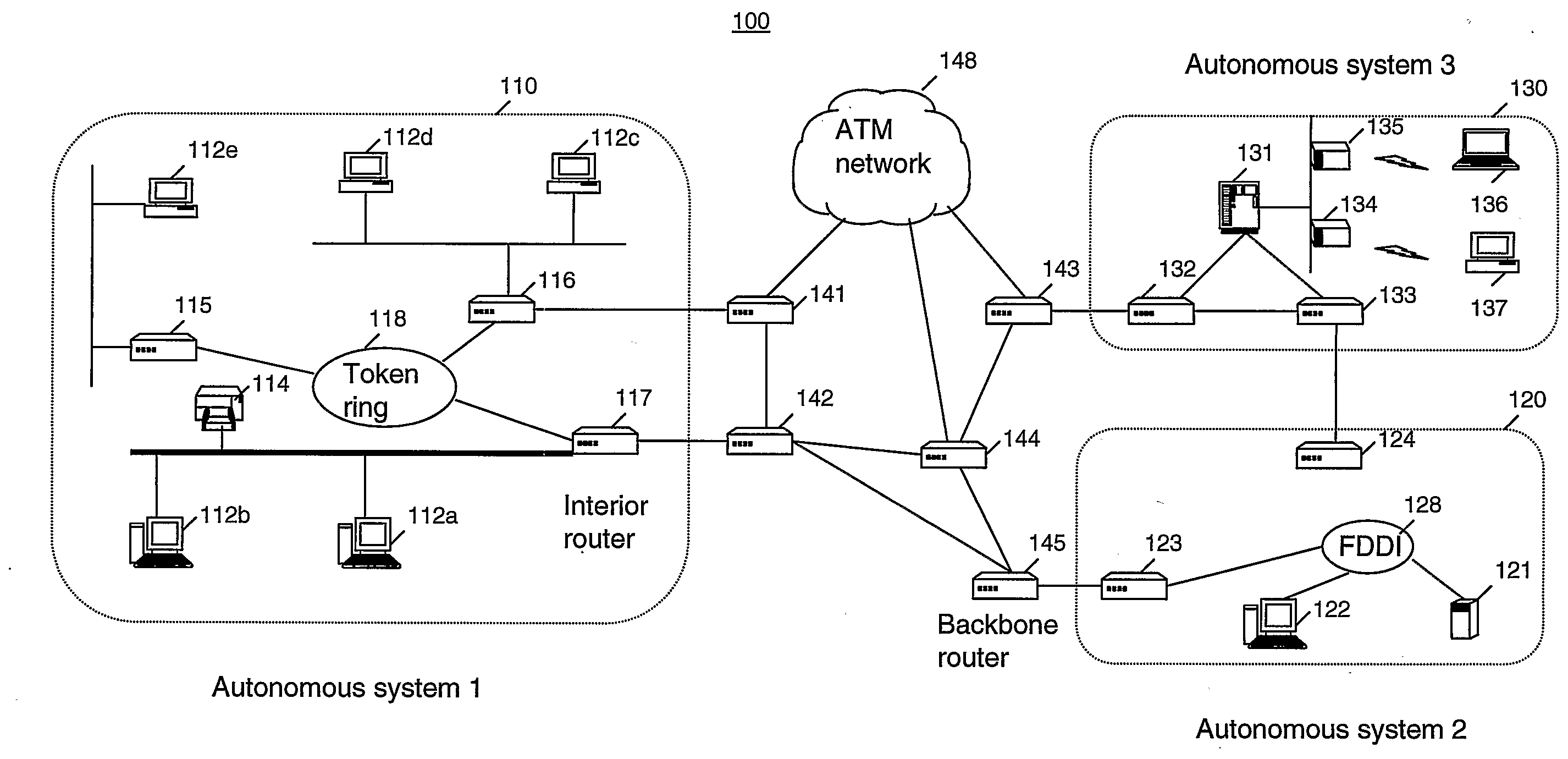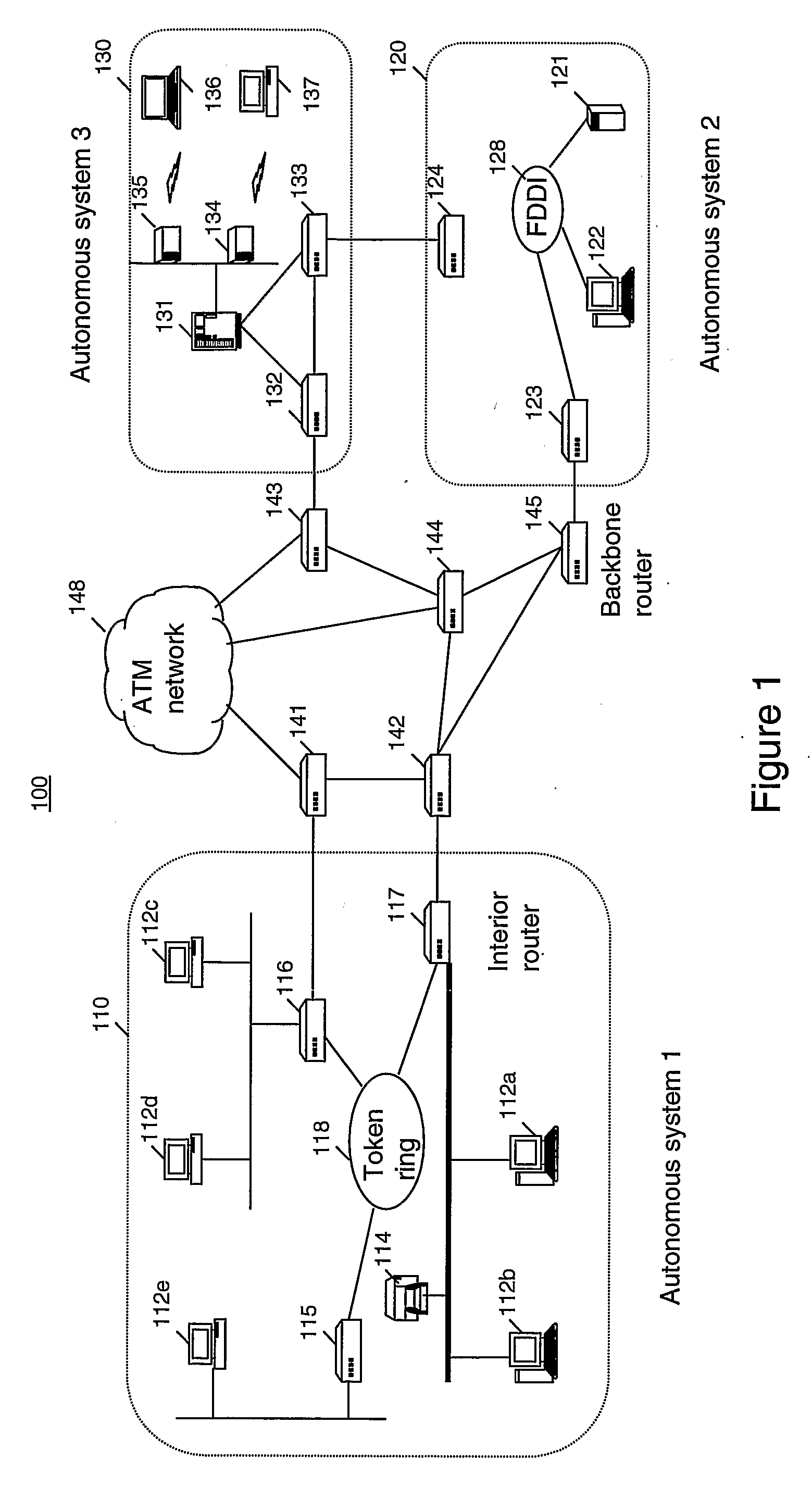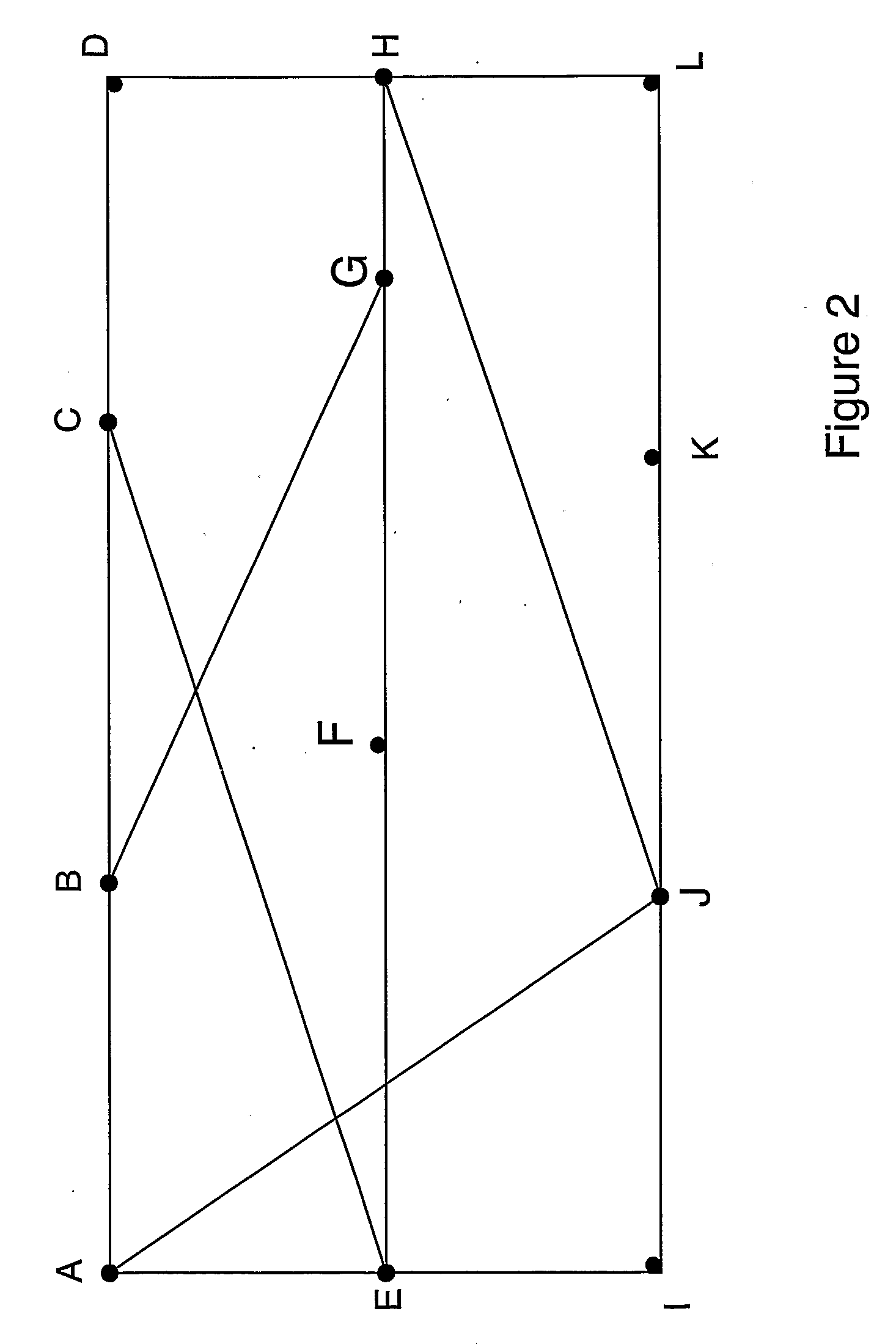Method of Operating a System
a technology of operating system and network, applied in the field of network operation, can solve the problems of large number of lost or heavily delayed packets, unauthorised third parties may be exposed via the hacked router to confidential information carried in the traffic, and achieve the effect of little “overhead” and simple introduction
- Summary
- Abstract
- Description
- Claims
- Application Information
AI Technical Summary
Benefits of technology
Problems solved by technology
Method used
Image
Examples
Embodiment Construction
[0025] Referring firstly to FIG. 1, the typical structure of a data internetwork as it relates to the present invention is discussed.
[0026] Structure of a Data Internetwork
[0027]FIG. 1 shows an internetwork 100 comprising a plurality of Autonomous Systems (AS's) 110, 120, 130 connected together via a backbone ATM network 148 including a plurality of backbone routers 141-145. In this example, AS 110 comprises five workstations 112a-e connected together via a token ring Local Area Network (LAN) 118. AS 10 also includes a printer 114 and three interior routers 115, 116 and 117 all of which are also connected together by the token ring LAN 118. AS 12 comprises a workstation 122, a server 121 and two routers 123 and 124 all connected together via a Fibre Distributed Data Interface (FDDI) LAN 128. AS 130 comprises a server 131, two wired routers 132, 133 and two wireless routers 134, 135 which provide wireless connections to a laptop computer 136 and a desktop computer 137 respectively....
PUM
 Login to View More
Login to View More Abstract
Description
Claims
Application Information
 Login to View More
Login to View More - R&D
- Intellectual Property
- Life Sciences
- Materials
- Tech Scout
- Unparalleled Data Quality
- Higher Quality Content
- 60% Fewer Hallucinations
Browse by: Latest US Patents, China's latest patents, Technical Efficacy Thesaurus, Application Domain, Technology Topic, Popular Technical Reports.
© 2025 PatSnap. All rights reserved.Legal|Privacy policy|Modern Slavery Act Transparency Statement|Sitemap|About US| Contact US: help@patsnap.com



